Greek
Boiotia, Thespiai AR Obol. Early-mid 4th century BC. Boiotian shield decorated with a vertical crescent / Head of Aphrodite Melainis to right; Θ-ΕΣ(retrograde) across neck. BCD Boiotia 608; HGC 4, 1403.
Fine.


"A varied collection of Ancient Coins with a specialty in Boeotian Coinage."
Coinage of the Boeotians
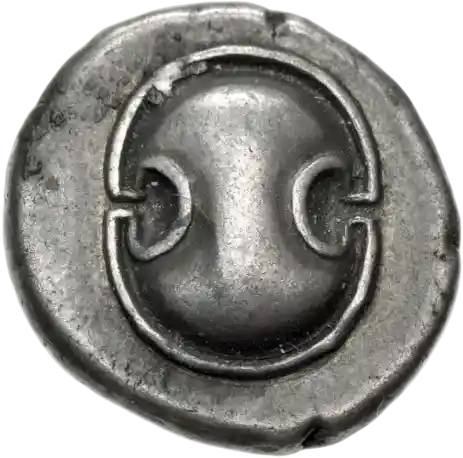
24 Best coins, why that number? Its because that's what fits on a numi...
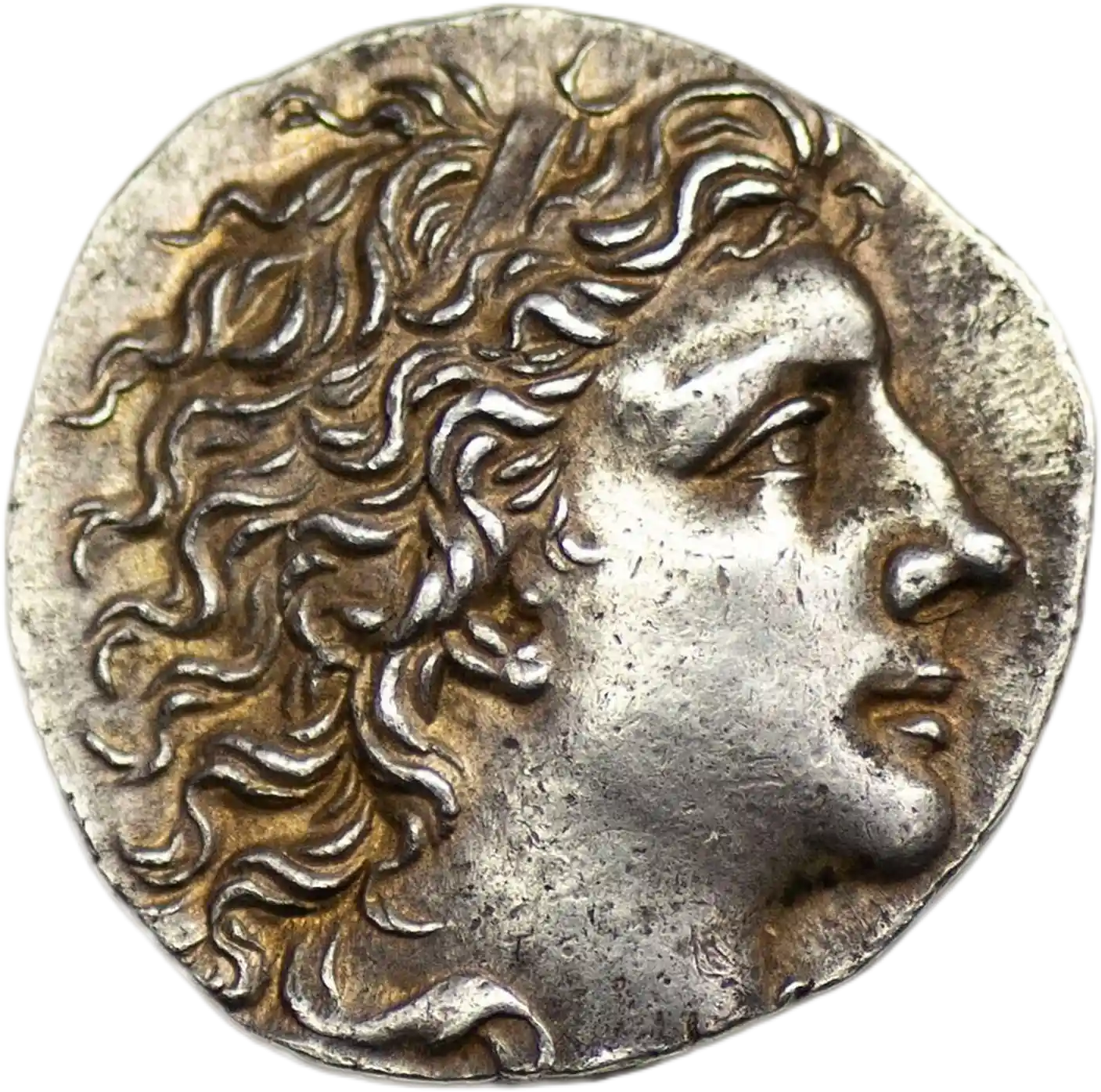
Top 10 coins purchased in 2025
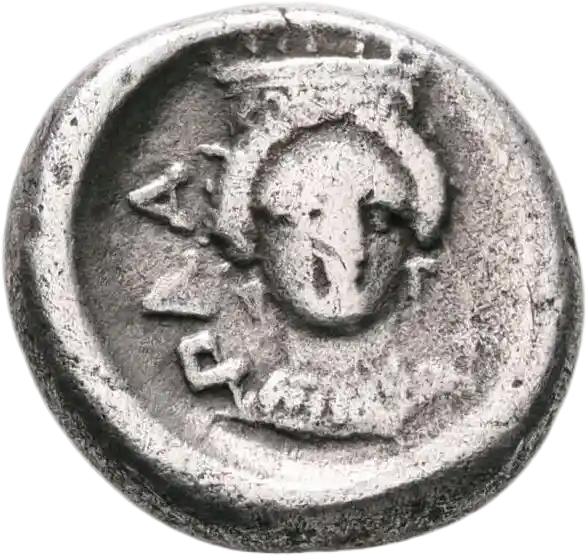
Top 10 coins acquired in 2024
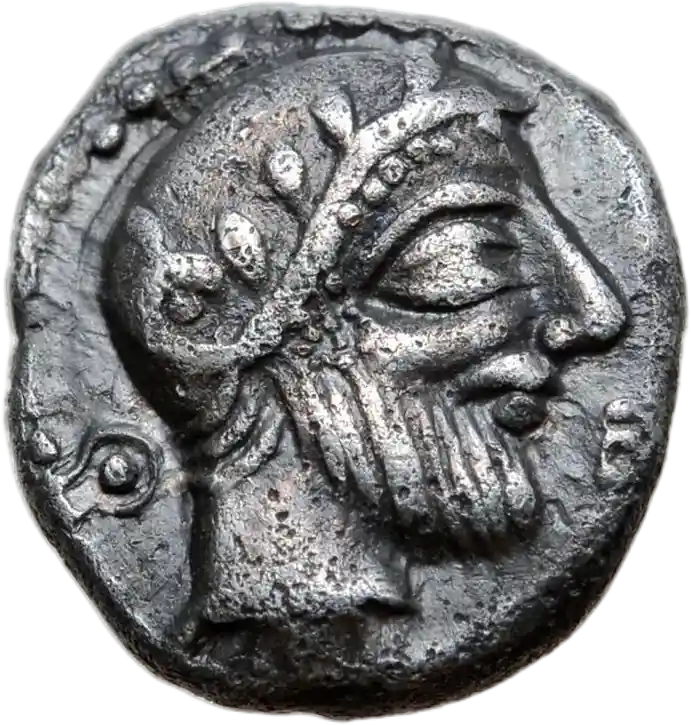
Coinage of Northern, Central and Sourthern Greece
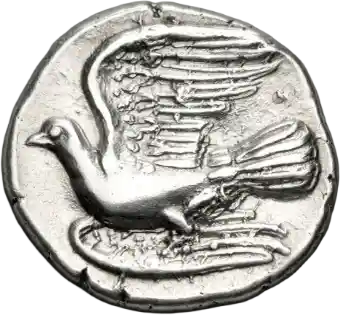
Coinage of the Greek Islands: Cyclades, Dodecanese, Ionian.
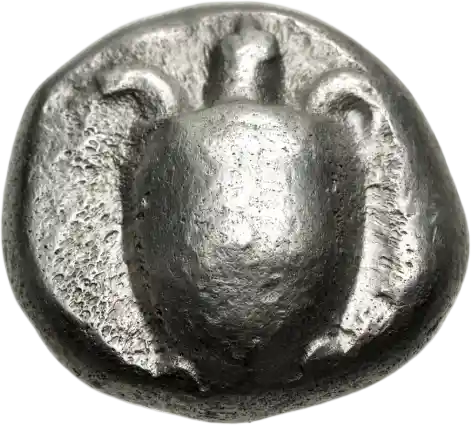
Coinage east of Thrace
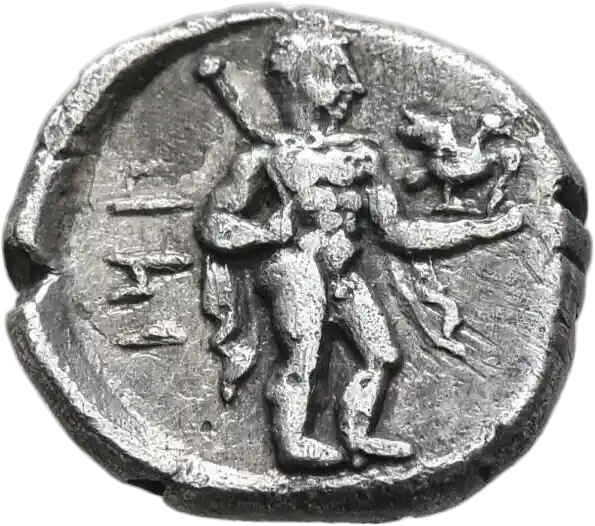
Coinage and various denominaitons of Hadrian
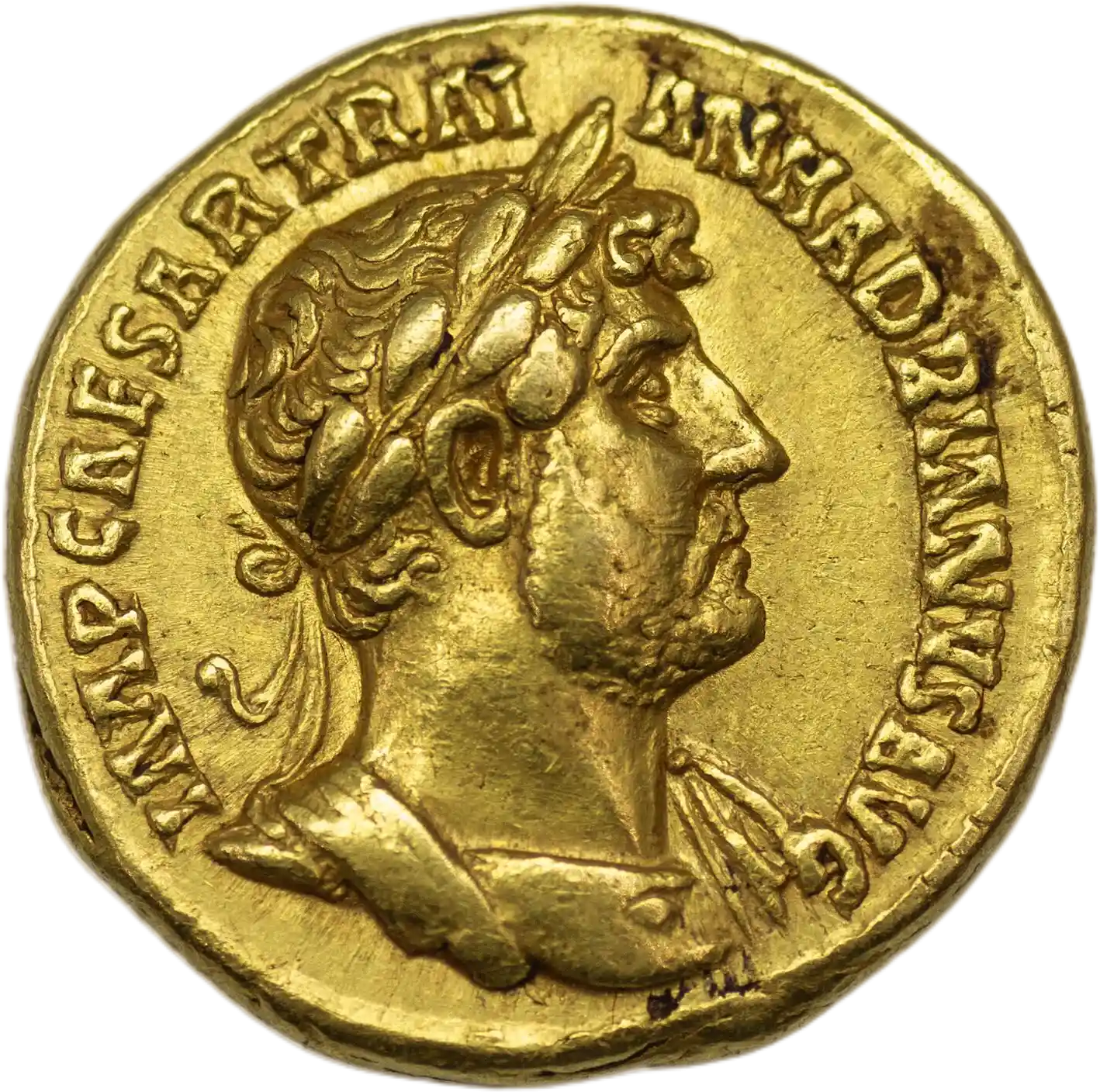
Coins until 27 BC from Rome
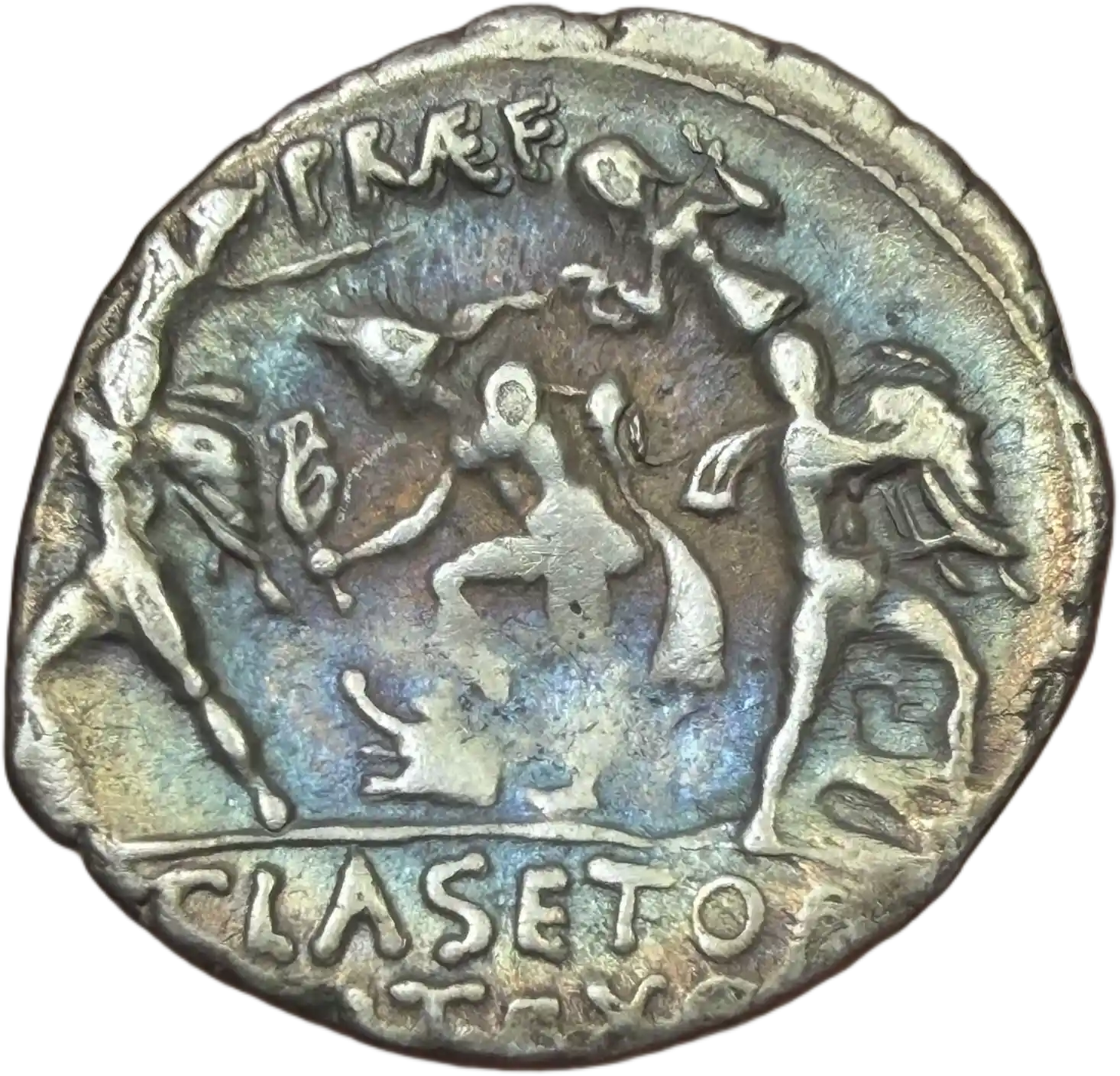
Coinage of Southern Italy and Sicily

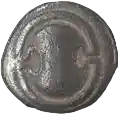
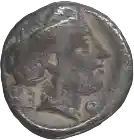
| Description |
Greek |
| Weight | 0.67g |
| Diameter | 9.00mm |
| Grade | Fine/F |
| Year(s) Minted | Struck: 400 BC - 350 BC |
No Links Associated.


| Description |
BOEOTIA. Thespiai. Early-mid 4th century BC. Obol (Silver, 10 mm, 0.84 g, 12 h). Boeotian shield. Rev. Θ-Ε-Σ-ΠΙ Two crescents back to back within circular incuse. BCD Boiotia 591. HGC 4, 1401. SNG Copenhagen 398-9. Slightly porous and with light deposits*, otherwise,* very fine. |
| Die Axis | 12h |
| Weight | 0.84g |
| Diameter | 10.00mm |
| Grade | Very Fine/VF |
| Year(s) Minted | Struck: 400 BC - 350 BC |
No Links Associated.
















| Description |
3.76g, 17mm Facing head of Demeter, slightly right These coins were overstruck on issued of Macedonia and typically have a muddled look |
| Weight | 3.76g |
| Diameter | 17.00mm |
| Grade | About Very Fine/aVF |
No Links Associated.


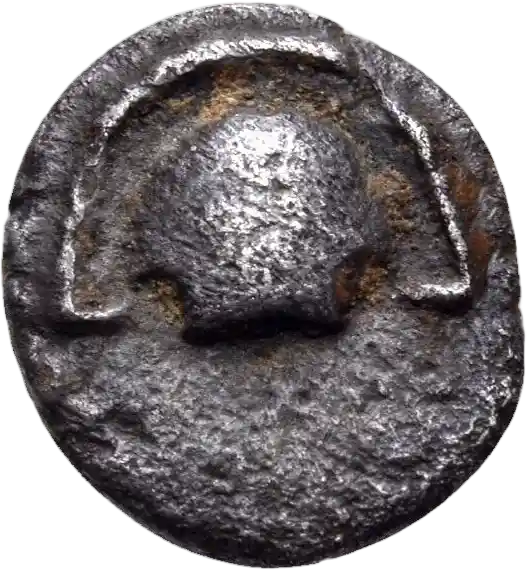
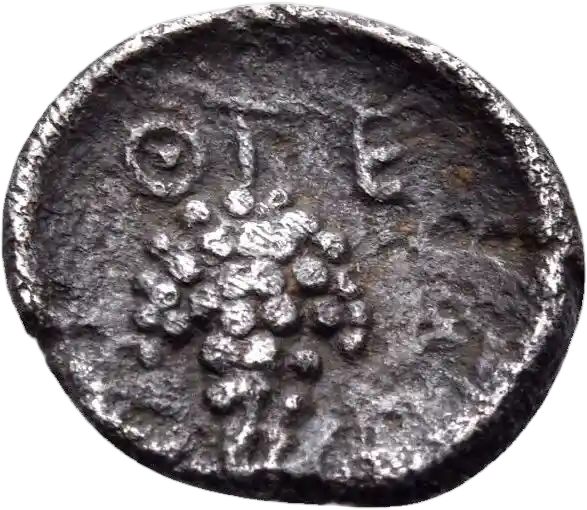
| Description |
BOEOTIA. Thebes. Circa 405-395 BC. Hemiobol (Silver, 8.5 mm, 0.39 g, 3 h). Half Boeotian shield. Rev. Θ - E Bunch of grapes on vine. BCD Boiotia 461. HGC 4, 1369. SNG Copenhagen 291. Attractively toned. Some minor pitting*, otherwise,* good very fine. |
| Die Axis | 3h |
| Weight | 0.39g |
| Diameter | 8.50mm |
| Grade | Good Very Fine/gVF |
| Year(s) Minted | Struck: 405 BC - 395 BC |
No Links Associated.






| Description |
Boeotia. Federal Coinage. Circa 395-340 BC. AR Hemidrachm (2.56g, 13mm). Obv.: Boeotian shield. Rev: BO I, kantharos; above, club right. BCD Boiotia 23; Head, Boeotia p. 55; BMC p. 36, 36; SNG Copenhagen 175. Obverse off centre, VF. |
| Weight | 13.00g |
| Diameter | 2.56mm |
| Grade | Very Fine/VF |
No Links Associated.


| Description |
Boeotia. Federal Coinage. Circa 395-340 BC. AR Hemidrachm (2.55g, 15mm). Obv.: Boeotian shield. Rev: BO I, kantharos; above, club right. BCD Boiotia 23; Head, Boeotia p. 55; BMC p. 36, 36; SNG Copenhagen 175. A bit off centre, VF. |
| Weight | 2.55g |
| Diameter | 15.00mm |
| Grade | Very Fine/VF |
No Links Associated.
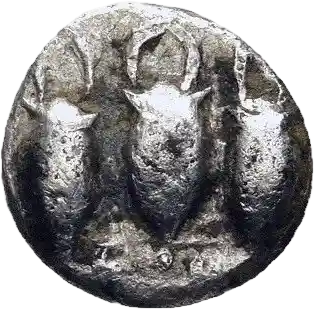
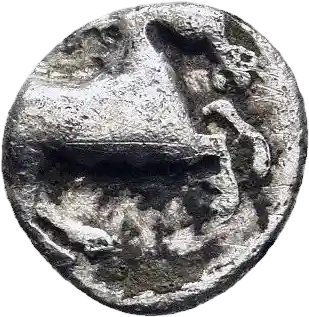
| Description |
BOEOTIA. Orchomenos. Tritetartemorion (circa 395-364 BC). |
| Obverse | EP Three wheat grains in a row, sprouting ends upwards. |
| Reverse | Horse galloping to right. |
| ID(s) | BCD Boiotia 218b. SNG Copenhagen 202. |
| Weight | 0.39g |
| Diameter | 7.00mm |
| Year(s) Minted | Struck: 395 BC - 364 BC |
No Links Associated.
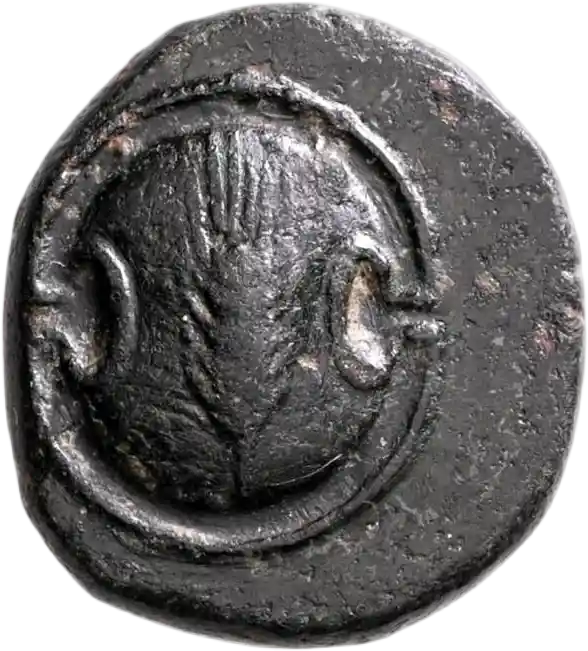
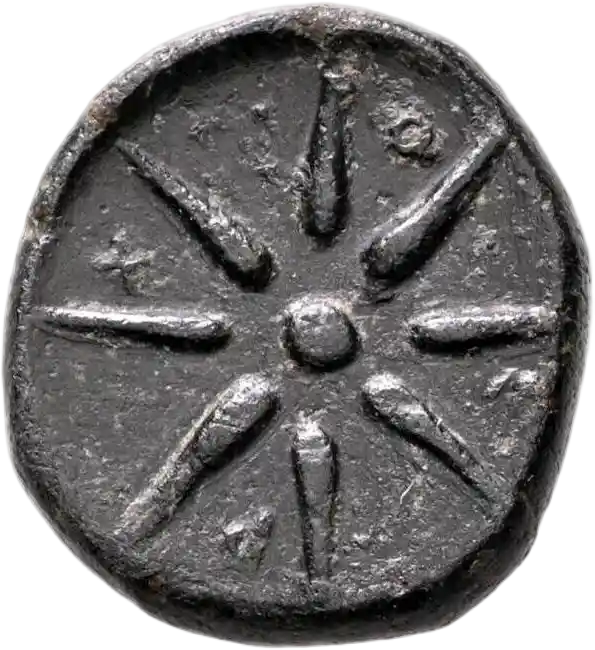
| Description |
BOEOTIA. Orchomenos. Circa 370-364 BC. AE (Bronze, 15 mm, 2.86 g). Boeotian shield, decorated with grain ear. Rev. E-P-X-O Star of eight rays. BCD Boiotia 225. HGC 4, 1260. SNG Copenhagen 206. Minor roughness and the obverse struck slightly off center*, otherwise,* very fine. |
| Obverse | Boeotian shield, decorated with grain ear. |
| Reverse | E-P-X-O Star of eight rays. |
| ID(s) | BCD Boiotia 225. HGC 4, 1260. SNG Copenhagen 206. |
| Weight | 2.86g |
| Diameter | 15.00mm |
| Grade | Very Fine/VF |
| Year(s) Minted | Struck: 370 BC - 364 BC |
No Links Associated.
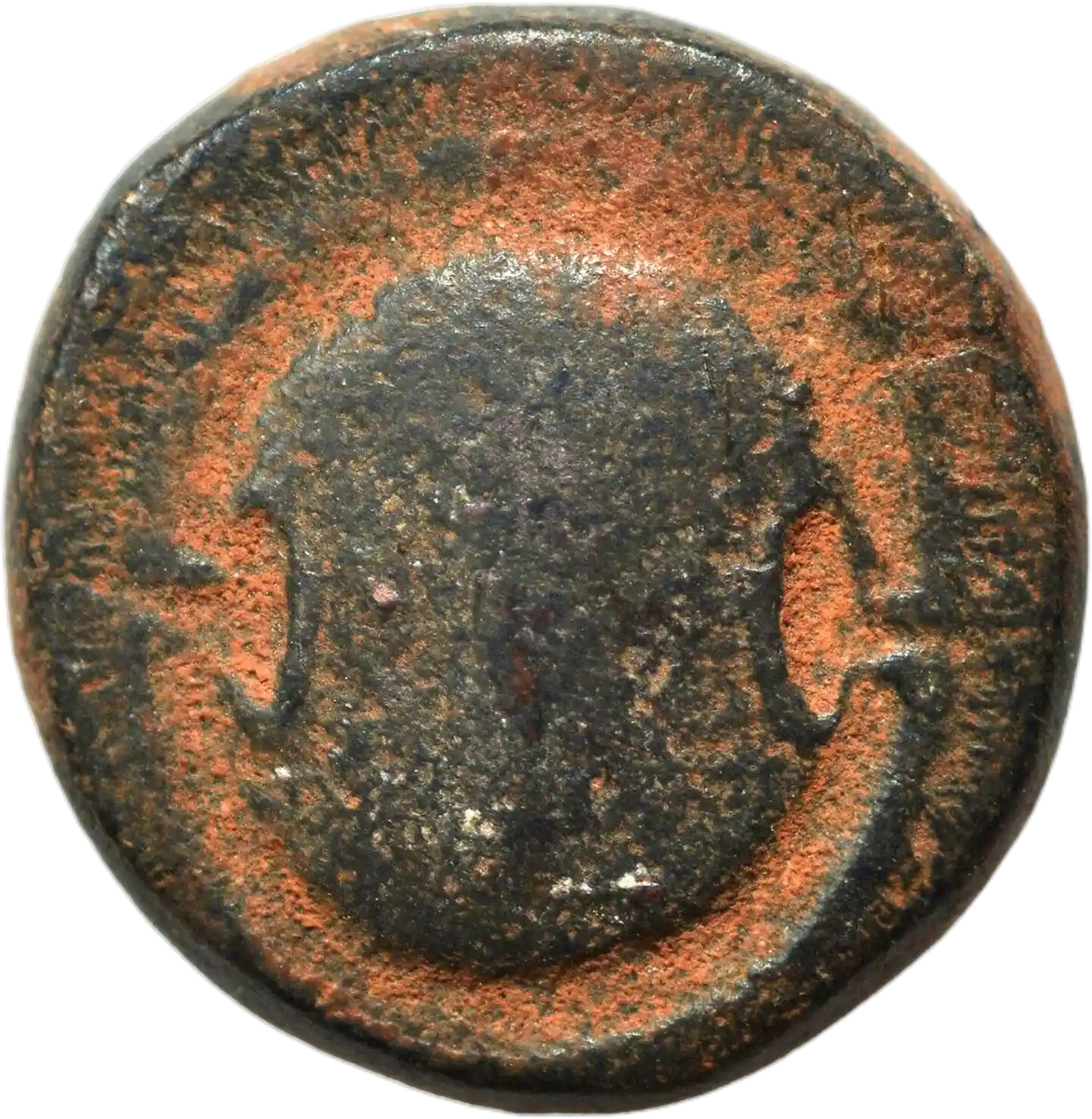
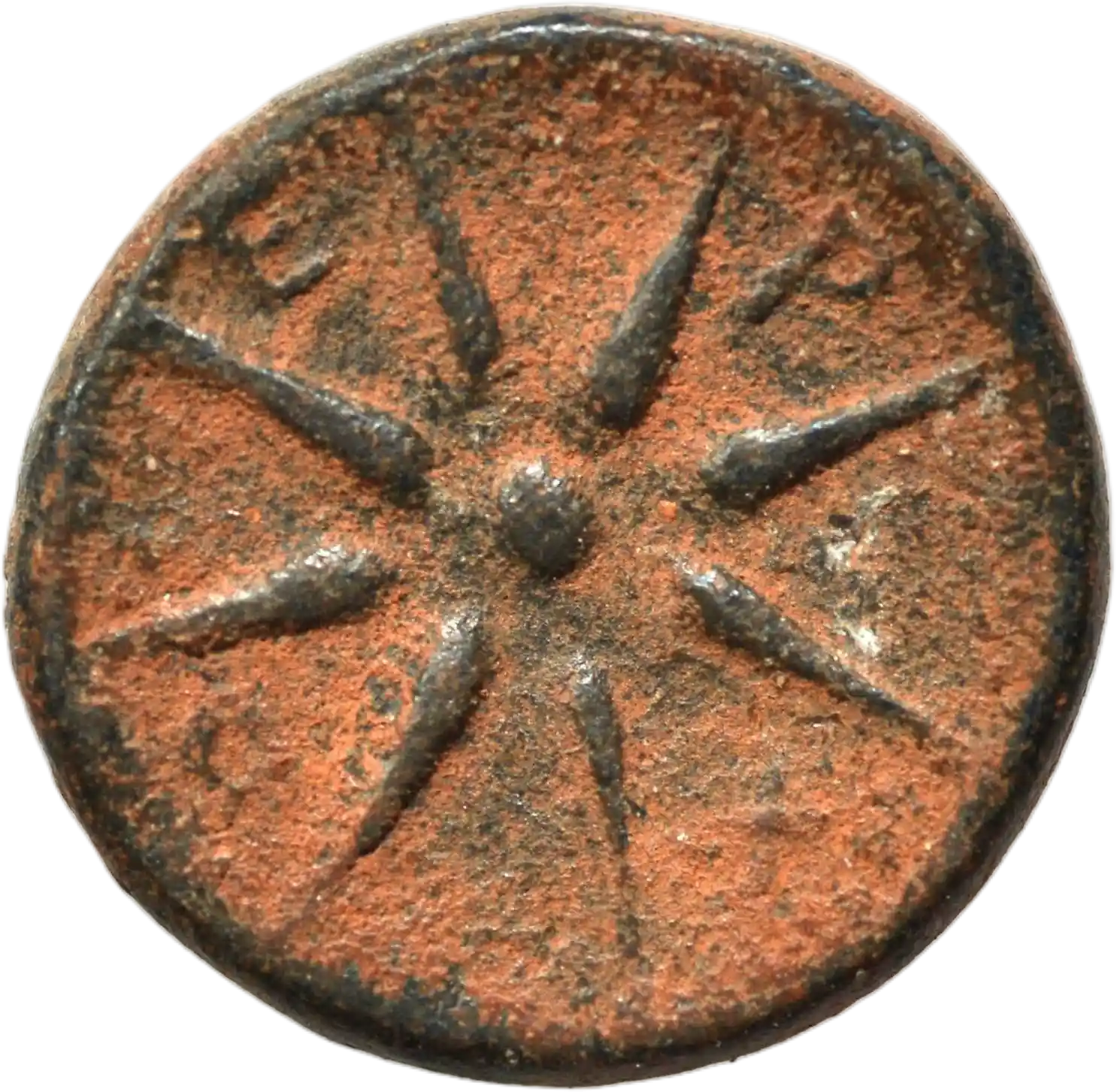
| Description |
BOEOTIA. Orchomenos. Circa 370-364 BC. (bronze, 2.20 g, 12 mm). Boeotian shield. Rev. E-P-K-O arranged withing the rays of a star. BCD Boiotia 225; HGC 4, 1260; SNG Copenhagen 206-7. Nearly very fine. |
| Weight | 2.20g |
| Diameter | 12.00mm |
| Grade | About Very Fine/aVF |
| Year(s) Minted | Struck: 370 BC - 364 BC |
No Links Associated.


| Description |
Title: Boeotia. Thebes. Federal coinage AR Drachm / Nike Attribution: Dewing 1521 |
| Weight | 4.70g |
| Diameter | 19.00mm |
| Grade | Very Fine/VF |
| Year(s) Minted | Struck: 196 BC - 146 BC |
No Links Associated.


| Description |
Title: Boeotia. Thebes. Federal coinage AR Drachm / Nike Attribution: BCD Boiotia 118 |
| Weight | 5.00g |
| Diameter | 17.50mm |
| Grade | Very Fine/VF |
| Year(s) Minted | Struck: 225 BC - 171 BC |
No Links Associated.
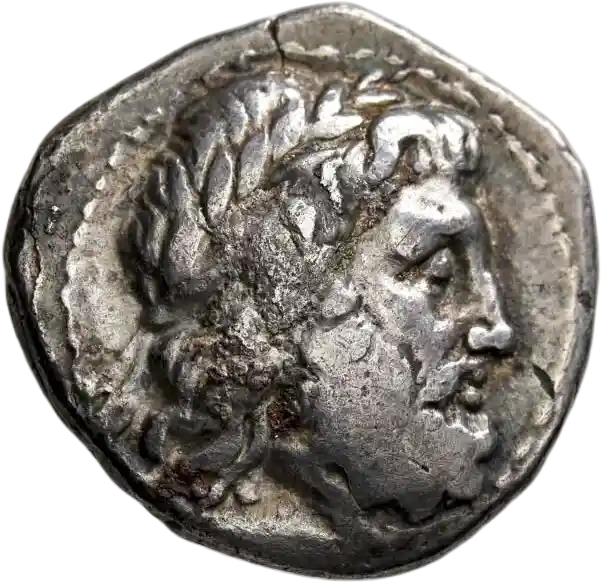
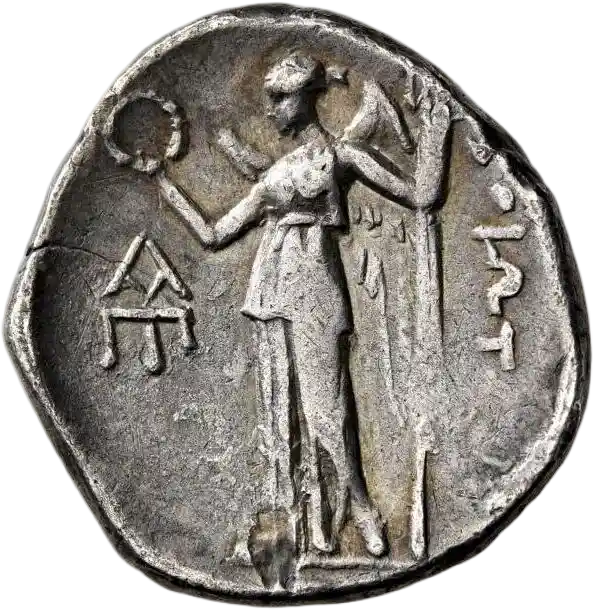
| Description |
BOEOTIA, Federal Coinage. Circa 225-171 BC. Drachm (Silver, 19 mm, 4.86 g, 3 h). Laureate head of Poseidon to right. Rev. ΒΟΙΩΤΩΝ Nike standing front, head to left, holding wreath in her extended right hand and trident in her left; to left, monogram. BCD Boiotia 117. HGC 4, 1175. SNG Copenhagen 390. Die rust and a flan crack*, otherwise,* nearly very fine. From the collection of Judge Hans-Joachim Specht (1935-2024), ex Gorny & Mosch 186, 8 March 2010, 1305. |
| Obverse | Laureate head of Poseidon to right. |
| Reverse | ΒΟΙΩΤΩΝ Nike standing front, head to left, holding wreath in her extended right hand and trident in her left; to left, monogram. |
| ID(s) | BCD Boiotia 117. HGC 4, 1175. SNG Copenhagen 390. |
| Die Axis | 3h |
| Weight | 4.86g |
| Diameter | 19.00mm |
| Grade | About Very Fine/aVF |
| Year(s) Minted | Struck: 225 BC - 171 BC |
No Links Associated.
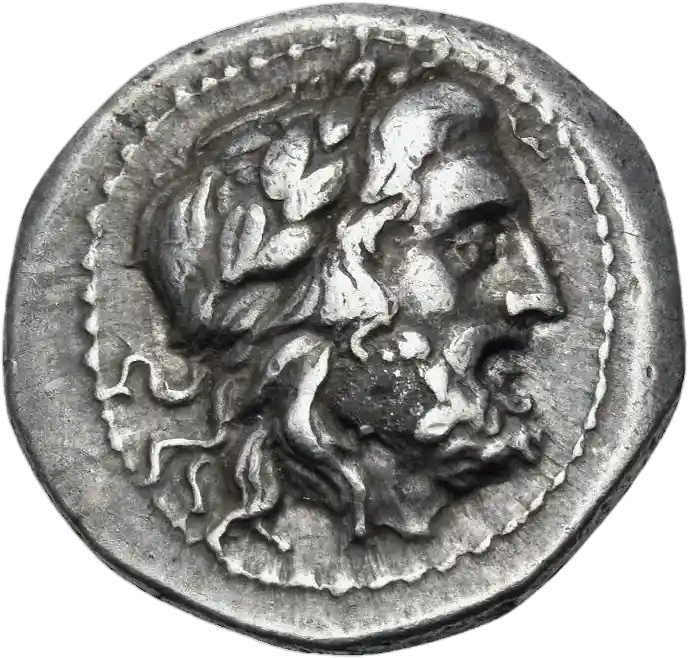
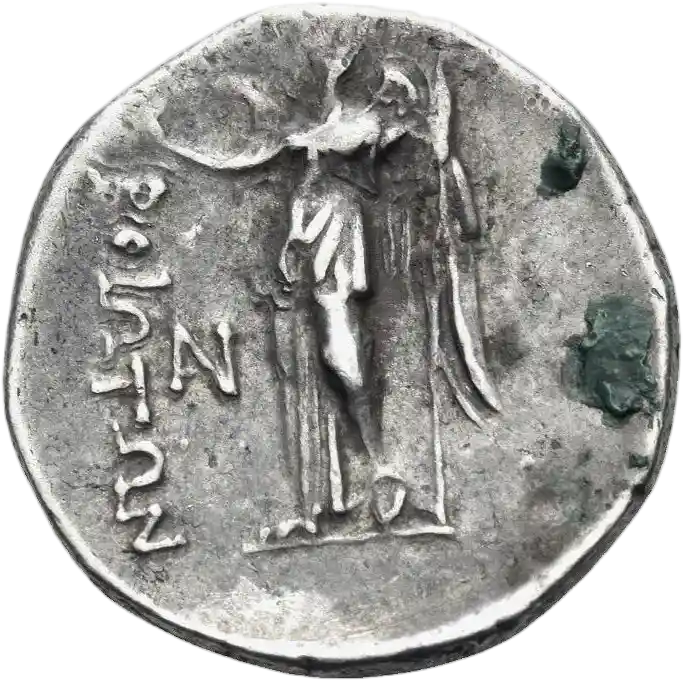
| Description |
BOEOTIA, Federal Coinage. Circa 225-171 BC. Drachm (Silver, 20 mm, 5.00 g, 10 h). Laureate head of Poseidon to right, within border of dots. Rev. ΒΟΙΩΤΩΝ Nike standing to left, holding wreath in her extended right hand and resting on a trident with her left; to left, AN monogram. BCD Boiotia 127. BMC 99. HGC 4, 1175. McClean 5618. Toned. Minor area of unobtrusive roughness beneath toning on the obverse; a few minor deposits on the reverse*, otherwise,* very fine. |
| Die Axis | 10h |
| Weight | 5.00g |
| Diameter | 20.00mm |
| Grade | Very Fine/VF |
| Year(s) Minted | Struck: 225 BC - 171 BC |
No Links Associated.
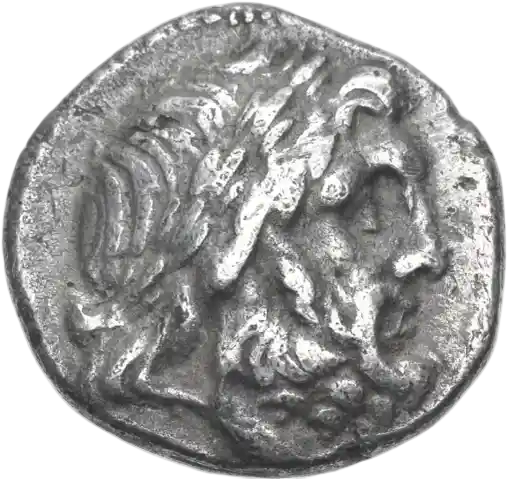
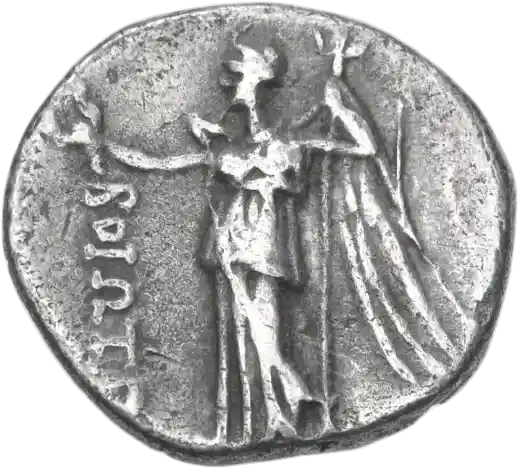
| Description |
BOEOTIA, Federal Coinage. Circa 225-171 BC. AR Drachm (17.5mm, 4.09 g, 6h). Laureate head of Poseidon right / Nike standing left, holding wreath and trident; no control marks. BCD Boiotia 144; HGC 4, 1175. Lightly toned, some porosity, minor marks, small die break on reverse. VF. |
| Die Axis | 6h |
| Weight | 4.09g |
| Diameter | 17.50mm |
| Grade | Very Fine/VF |
| Year(s) Minted | Struck: 225 BC - 171 BC |
No Links Associated.